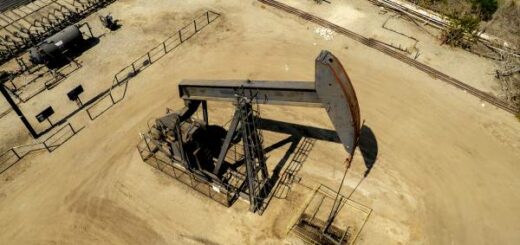December’s consumer costs are probably going to be hot, however the pinnacle could come earlier

- The buyer value file is delivered by the Labor Department Wednesday and is relied upon to show feature expansion hopped by 7%, its quickest pace beginning around 1982.
- The Federal Reserve is as of now on a way to raise financing costs to fight rising costs. A hot number ought to legitimize the Fed’s arrangement shift.
- “It’s as yet hot, hot, hot, and it’s significant on the grounds that we’re currently where the Fed stresses over that 7% number getting heated into compensation and getting more dug in,” said Diane Swonk, boss financial expert at Grant Thornton.
A trade-in vehicle showroom is found in Annapolis, Maryland on May 27, 2021 as numerous vehicle sellers the nation over are running out of new vehicles as a lack of central processors has almost ended creation for some vehicle makers.
A critical proportion of buyer costs is relied upon to show that expansion at the customer level spiked in December, the most blazing expansion in costs since the mid 1980s.
Barring food and energy, CPI is relied upon to have risen 0.5% or 5.4% year-over-year, when the Labor Department delivers the information Wednesday at 8:30 a.m. ET.
Financial specialists expect the buyer value rose 0.4% in December, and 7% on a year-over-year premise, as indicated by Dow Jones. That looks at to a 0.8% leap in November, or a 6.8% increase year-over-year, the most noteworthy starting around 1982.
“At some point in the following a few months, we figure expansion will have topped, in December or some time in the main quarter,” said Luke Tilley, boss financial expert at Wilmington Trust. “We really do anticipate that expansion should slow in 2022. We anticipate that costs should go up more leisurely in 2022 than they did in 2021. We don’t have a similar upgrade. We expect some more vulnerable spending and inventory network issues won’t be completely settled, however we think we have passed the top in a portion of those delivery supply chains.”
“It’s as yet hot, hot, hot, and it’s significant in light of the fact that we’re currently where the Fed stresses over that 7% number getting heated into compensation and getting more settled in,” said Diane Swonk, boss market analyst at Grant Thornton. “You have the Fed in alarm rather than patient mode, so the danger is overshooting… We’re currently in a place of the Fed pursuing as opposed to expecting. It’s troubling.”
Market analysts differ on precisely when expansion will top, yet it’s beyond the underlying time period the Federal Reserve had expected to see when it named expansion “fleeting” or transitory. The Fed presently gauges three quarter-point financing cost climbs this year to fight expansion.
The Fed’s instruments to alleviate rising costs
“Assuming we see expansion continuing at significant levels surprisingly long, then, at that point, assuming we need to raise interest more after some time, we will,” Powell said. “We will utilize our instruments to get expansion back.”
Expansion information has over and over astounded to the potential gain. Business analysts say there’s a danger for a significantly quicker pace in Wednesday’s report.
Central bank Chairman Jerome Powell Tuesday told a Senate board that the national bank will utilize its instruments to moderate rising costs assuming it sees more determined expansion.
“On the off chance that it’s more blazing than anticipated, it’s sort of an approval of the way the Fed has as of now put themselves on,” said Tilley. Other than raising loan fees, Powell said Tuesday that the national bank could start to recoil its asset report this year, one more advance toward more tight approach.
Watch for rising rents and ‘stickier’ increments
Cummins anticipates that CPI should be ascending at 3% before the year’s over. He said rents have been moving in the course of recent years. Lease costs, along with inn expenses and proprietors’ identical lease are the asylum part of the buyer value record and are around 30% of feature CPI, he noted.
Kevin Cummins, boss U.S. business analyst at NatWest Markets, said the top in purchaser feature expansion could be this month, and he noticed the make-up in expansion this year is moving.
“Last year, it was generally on the merchandise side. We saw a get in center merchandise in our gauge. We make them shift from utilized vehicles and ware costs. Presently it’s moving toward rents which are stickier,” he said. “We have expansion sort of holding in around 3% this year incompletely as a result of lease and furthermore more extensive compensation pressures that are building in light of the fact that the work market is getting however hot as it very well might be.”
For 2022, Cummins anticipates that rents should rise 4.5% year-more than year, in the wake of rising 3.4% in 2021. In 2020, the speed of lease expands eased back to 1.9% from 3.3% in 2019, he noted. He said rents should rise considerably more in 2023.
“Being that it has such a huge weight, those CPI numbers will stay pretty raised,” Cummins said.
Disclaimer: The views, suggestions, and opinions expressed here are the sole responsibility of the experts. No STOCKS MONO journalist was involved in the writing and production of this article.



